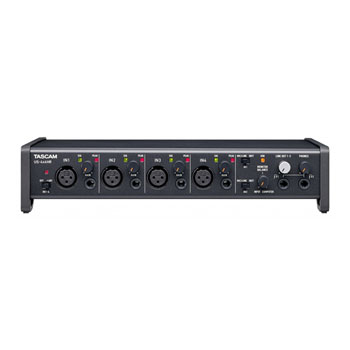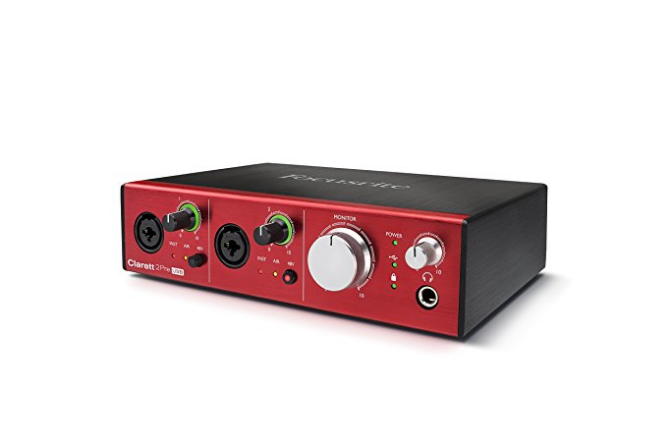


- #REDDIT USB VS FIREWIRE AUDIO INTERFACE SERIAL#
- #REDDIT USB VS FIREWIRE AUDIO INTERFACE PC#
- #REDDIT USB VS FIREWIRE AUDIO INTERFACE WINDOWS#
These have the Firewire connector on one end and the USB connector on the other and can connect the device straight to the computer. Some are designed as Firewire to USB cables. Thus, the most common use case for an adapter is to connect a Firewire device to a USB port.Īdapters are typically dongles, small devices with a short wire that plugs into the USB port and an integrated Firewire port. It is significantly more likely for a computer to have USB ports and potentially Thunderbolt ports than it is to have a Firewire port.

USB has enjoyed significantly wider adoption than Firewire. Both technologies support Plug-and-Play and hot-plugging (hot-swappable). If you cannot purchase a Firewire® to USB adapter, using a hub allows you to use devices that are compatible with either technology. The combination hub is actually two separate ports combined into a single form factor for convenience there is no conversion between Firewire® and USB taking place when you use one of these hubs. This type of device has two ports in a single hub, which may be either external or internal one port is used Firewire® and one for USB, allowing either type of device to function.

A Firewire® to USB adapter cable for transferring digital video (DV) is available from at least one manufacturer, but it can be expensive and difficult to find.Ī USB cable to the left of two Firewire® cables.Įven if you don't have a Firewire® to USB adapter cable, it doesn't mean that your Firewire® devices are useless if you have a USB port, or vice versa. The two technologies are not integrated, meaning it is not possible to connect a USB device to a Firewire® port directly.
#REDDIT USB VS FIREWIRE AUDIO INTERFACE SERIAL#
Price (Approx): $269.99 – Check price on Amazon here.Firewire® ( IEEE 1394) and USB (Universal Serial Bus) are two separate high-speed bus technologies that allow multiple devices to be connected to a computer. Inputs: 2 x combi mic/instrument/line XLR inputs with 48V phantom power and Air, 4 x 1/4″balanced fixed line inputs, 1 x S/PDIF digital inputs, 1 x 5-pin MIDI input | Outputs: 4 x 1/4″ balanced line outputs, 2 x stereo headphone outputs, 1 x S/PDIF digital outputs, 1 x 5-pin MIDI output Price (Approx): $229.99 – Check price on Amazon here. Inputs: 2 x combi mic/instrument/line XLR inputs with 48V phantom power and Air | 2 x 1/4″balanced fixed line inputs | 1 x 5-pin MIDI input | Outputs: 4 x 1/4″ balanced line outputs, 1 x stereo headphone output, 1 x 5-pin MIDI output Price (Approx): $119.99 – Check price on Amazon here. Inputs: 2 x combi mic/instrument/line XLR inputs with 48V phantom power and Air | Outputs: 2 x 1/4″ balanced line outputs, 1 x stereo headphone output Price (Approx): $79.99 – Check price on Amazon here. Inputs: 1 x XLR mic input with 48V phantom power and Air, 1 x balanced line/instrument input | Outputs: 2 x 1/4″ balanced line outputs, 1 x stereo headphone output So make sure your device has firewire connectivity before purchasing an interface. However, recent Apple models haven’t included firewire inputs, instead opting for a Thunderbolt input. It is another connection widely used in the Apple universe. Firewire – Firewire Audio Interfaces have been used by professionals for years. There are certain adaptors that exist to bridge this technological gap, but from my experience they are very unreliable.ģ.
#REDDIT USB VS FIREWIRE AUDIO INTERFACE WINDOWS#
This connection is manufactured by Apple, so Windows devices are VERY unlikely to have thunderbolt inputs. Thunderbolt – Thunderbolt offers an incredibly fast 10Gbps connection, resulting in a much quicker transfer rate in comparison to Firewire.
#REDDIT USB VS FIREWIRE AUDIO INTERFACE PC#
It’s still worth checking if an interface is Mac / PC compatible, but most USB audio interfaces will work for both.Ģ. Many of these audio interface are USB bus-powered, so will only require the power from your laptop or computer to function. USB – A USB audio interface is a very standard choice and can be found on almost every PC, Mac or other computer.


 0 kommentar(er)
0 kommentar(er)
